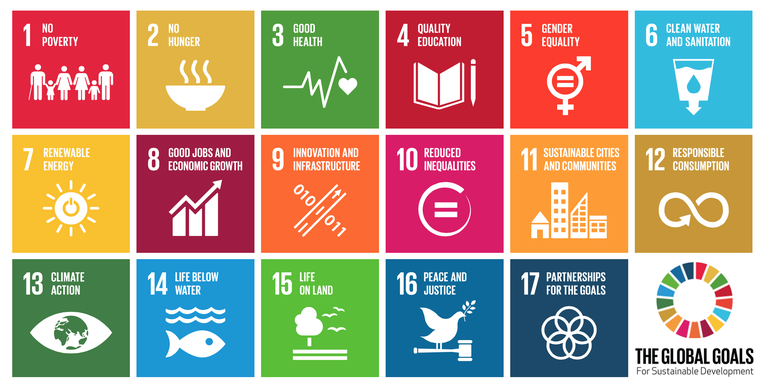Taking small steps into teaching the SDGs through science
Taking small steps into teaching the SDGs through science

The Global Goals
For one reason or another it can take time for ideas to trickle down to classroom teachers and it was almost two years after the launch of the World’s Largest Lesson in 2015 that I became aware of the United Nations Sustainable Development Goals (#SDGs). This agenda for 2030 provides a shared blueprint for peace and prosperity for people and the planet, now and into the future. At its heart the 17 SDGs are an urgent call for action by all countries - developed and developing - in a global partnership. They recognize that ending poverty and must go hand-in-hand with strategies that improve health and education, reduce inequality, and encourage economic growth while tackling climate change and working to preserve our oceans and forests.
Teachers in state-funded schools are required to cover the national curriculum issued by the Department for Education. For science this can feel prescriptive and constraining both in terms of the amount of information pupils need to absorb and the actual content that must to be covered. It is almost impossible to teach everything and even more daunting to include anything new such as the SDGs. However, following a UN statement in 2018 that suggests we now have just 11 years to avoid climate change catastrophe, it seems strangely futile to teach pupils about anything else.
If you ask Year 7 pupils what they know about the ‘anomaly of the ice-water transition’ (i.e., why ice floats on water) which is identified in the national curriculum for KS3 science their eyes may glaze over. However if you ask the same pupils why is it important that ice floats on water then they give a hundred reasons, many involving penguins and polar bears, of why floating ice is essential to Life on Earth (SDG15). It seems intuitive to children to connect with nature and the planet we call home.
Associating learning objectives to global sustainability has so many benefits for the pupils including; engagement, purpose, creativity and an appreciation of cultural diversity. It also starts to prepare young people for a slightly uncertain future and can support their mental health. So, once you’ve decided that the SDGs are something your pupils should be introduced to the first small step might be to show the World’s Largest Lesson videos – these describe the Global Goals in a child-friendly format and provide resources to support learning.
There is a wide array of other excellent online resources for science teachers and other subjects. Recommended sites include the Practical Action and Global Dimensions. Much of the material already relates to the national curriculum (NC). In my classroom I have taken further steps to link each topic of the national curriculum to the SDGs. The lesson adaptations are not time consuming but can have great impact, for example:
- Healthy pregnancy – comparing infant mortality rates from different countries linking Gestation and Birth (NC) to Good Health and Well-Being (SDG3) and Reduced Inequalities (SDG10).
- Speed calculations – adapting questions so that pupils compare types of transport such as electric and diesel cars and assess their environmental impact linking Describing Motion (NC) to Industry, Innovation and Infrastructure (SDG9) and Climate Change (SDG13).
- Energy – building a model wind turbine using card and a cotton reel to link Energy Resources (NC) to Affordable and Clean Energy (SDG7).
- Pure and Impure Substances – considering water collection and quality around the world linking Filtration (NC) to Clean Water and Sanitation (SDG6).
- A quick-win plenary asking pupils to make their own links from the lesson to one of the SDGs.
One of the indicators of the goals (SDG 4.7.1) is to provide our pupils with a Quality Education and requests that ‘global citizenship education and education for sustainable development are mainstreamed at all levels in: (a) national education policies, (b) curricula, (c) teacher education and (d) student assessment’. As the clock ticks down toward 2030 there is a huge amount of change that needs to be made to ensure we start to live sustainably on Earth. Incorporating the SDGs into the classroom is fundamental as it is young people who must be prepared for the future but who also have the most capacity to adapt. It is through education that our young people can be empowered to tackle climate change, ecological decline and social inequality.
Reference websites:
1. http://worldslargestlesson.globalgoals.org/
2. http://www.undp.org/content/undp/en/home/sustainable-development-goals.html